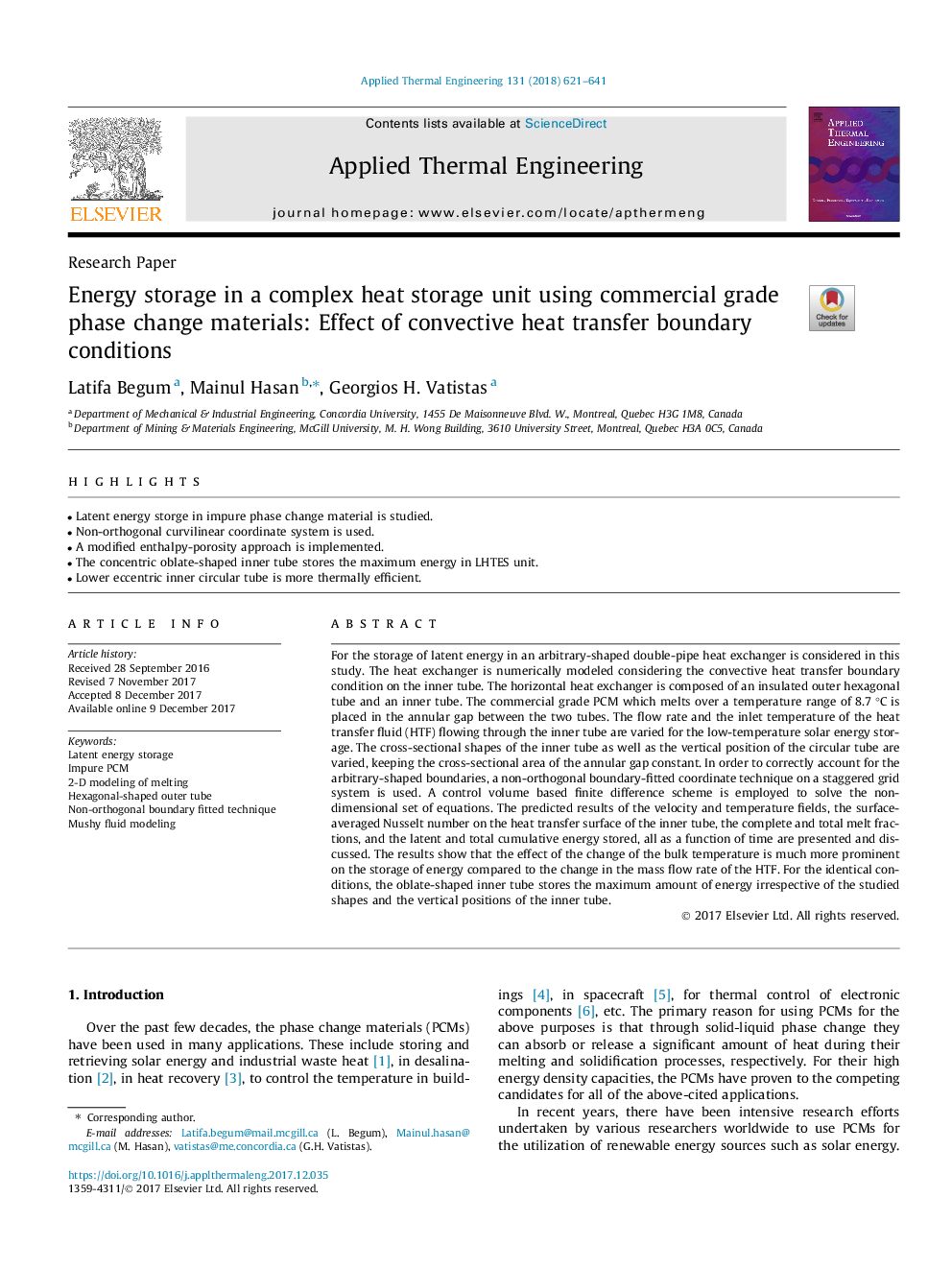| Article ID | Journal | Published Year | Pages | File Type |
|---|---|---|---|---|
| 7046242 | Applied Thermal Engineering | 2018 | 21 Pages |
Abstract
For the storage of latent energy in an arbitrary-shaped double-pipe heat exchanger is considered in this study. The heat exchanger is numerically modeled considering the convective heat transfer boundary condition on the inner tube. The horizontal heat exchanger is composed of an insulated outer hexagonal tube and an inner tube. The commercial grade PCM which melts over a temperature range of 8.7â¯Â°C is placed in the annular gap between the two tubes. The flow rate and the inlet temperature of the heat transfer fluid (HTF) flowing through the inner tube are varied for the low-temperature solar energy storage. The cross-sectional shapes of the inner tube as well as the vertical position of the circular tube are varied, keeping the cross-sectional area of the annular gap constant. In order to correctly account for the arbitrary-shaped boundaries, a non-orthogonal boundary-fitted coordinate technique on a staggered grid system is used. A control volume based finite difference scheme is employed to solve the non-dimensional set of equations. The predicted results of the velocity and temperature fields, the surface-averaged Nusselt number on the heat transfer surface of the inner tube, the complete and total melt fractions, and the latent and total cumulative energy stored, all as a function of time are presented and discussed. The results show that the effect of the change of the bulk temperature is much more prominent on the storage of energy compared to the change in the mass flow rate of the HTF. For the identical conditions, the oblate-shaped inner tube stores the maximum amount of energy irrespective of the studied shapes and the vertical positions of the inner tube.
Keywords
Related Topics
Physical Sciences and Engineering
Chemical Engineering
Fluid Flow and Transfer Processes
Authors
Latifa Begum, Mainul Hasan, Georgios H. Vatistas,
